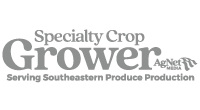
The U.S. Department of Agriculture Foreign Agricultural Service (USDA/FAS) expects lemon production in South Africa in 2024–25 to grow by 7% from the prior year to 780,000 metric tons (MT).
PLANTED AREA
USDA/FAS forecasts that the country’s land planted in lemons will remain unchanged at 18,000 hectares. Producers are holding back from planting any more lemons due to an oversupply and limited intake for processing.
The lemon acreage in South Africa more than doubled in the previous decade, driven by global demand and rising global prices. It has flattened since 2020 due to bearish export prices.
The country’s largest growing region for lemons is the Eastern Cape province, accounting for 41% of total area planted. The Eastern Cape is followed by Limpopo (34%) and Western Cape (14%) provinces.
By far, the most popular lemon cultivar planted in South Africa is Eureka, representing 75% of total area. Eureka is followed by the Lisbon (7%) and 2PH Seedless (6%) cultivars.
LESS PROCESSING
Lemon prices for processing in South Africa have weakened and are deemed unprofitable due to a drop in exports of lemon juice. Processors are reported to have high stocks of lemon juice and appear to have minimized purchases.
USDA/FAS estimates that lemon intake for processing in 2024–25 will decrease by 3% from the prior year to 154,000 MT. The reduction in processing is due to increased exportable supply and reduced demand for lemon juice.
EXPORTS AND IMPORTS
USDA/FAS forecasts that in 2024–25, lemon exports will increase by 11% from the prior year to 590,000 MT.
The European Union remained the largest market for South African lemons in 2022–23, accounting for almost 40% of total exports. Lemon exports to the United Arab Emirates and Russia represented 12% and 9% of exports, respectively.
Domestic production meets local demand for most of the year, so lemon imports are usually under 3,000 MT. Lemon imports in 2024–25 are forecast to decrease to 2,000 MT.
See the full USDA/FAS report on South African citrus production here.
Source: USDA/FAS
Share this Post
Sponsored Content










